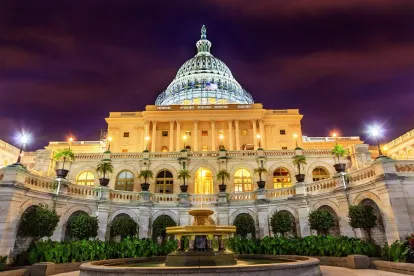On June 3, 2020, the United States Senate passed the House version of the Paycheck Protection Program Flexibility Act of 2020 (the “PPP Flexibility Act”). Under the PPP Flexibility Act, which is expected to be signed into law by President Trump, Congress fixed several of the biggest issues created by the Small Business Administration (“SBA”) and United States Treasury (“Treasury”) implementing guidance under the Paycheck Protection Program. Among these fixes were: (i) increasing the amount of loan proceeds able to be spent on non-payroll costs to 40% (up from 25%), (ii) extending the “covered period” during which borrowers can spend forgivable expenses to 24 weeks (up from 8 weeks, although borrowers can choose to use the original 8 week period), (iii) extending the minimum loan maturity date to five years (up from two years), (iv) automatically extending the loan deferral period until a decision on forgiveness is rendered by the SBA (up from a fixed 6 months), and (v) extending the deadline for rehiring employees to December 31, 2020 (up from June 30, 2020).
Background
On March 27, 2020, the President signed the Coronavirus Aid, Relief, and Economic Security Act of 2020 (the “CARES Act”) into law. Section 1102 of the CARES Act temporarily permits the SBA to guarantee 100% of loans granted under the Paycheck Protection Program (“PPP”). The PPP is a loan guarantee program, administered by the United States Treasury and SBA, through which financial institutions can make forgivable loans to small business concerns, business concerns with fewer than 500 employees, and certain other eligible borrowers. Section 1106 of the CARES Act provides for forgiveness of up to the full principal amount of qualifying loans guaranteed under the PPP.
Changes to PPP Implementing Rules
On June 3, 2020, the United States Congress took action to modify a number of rules and regulations put in place by SBA and Treasury regarding the PPP. These changes include:
-
Extending the minimum loan maturity date for loans made after the date of enactment of the PPP Flexibility Act from two (2) years to five (5) years. The maturity date on previous PPP loans is not automatically extended, but it may be extended by mutual agreement of the lender and borrower. The CARES Act originally gave SBA and Treasury the ability to select maturity dates of up to ten (10) years.
-
Extending the “covered period” for borrowers to spend loan proceeds on forgivable expenses from 8 weeks to 24 weeks. Many borrowers are not yet able to open for business and were forced to choose between forgiveness and conserving PPP loan proceeds until they could open again. Existing borrowers are able to elect to keep the current 8 week covered period, though.
-
Extending the deadline to cure reductions in full-time equivalent (“FTE”) headcount and salary cuts from June 30, 2020 to December 31, 2020, as well as providing potential exemptions for the reduction in forgiveness based on full-time equivalent employee reductions if the borrower is not able to rehire employees or hire replacement employees or cannot return to normal business activities because of health and safety restrictions.
-
Increasing the maximum amount of the PPP loan proceeds that can be spend on non-payroll costs from 25% to 40%. For many borrowers, non-payroll costs were a significant part of their covered period expenses.
-
Extending the deferral period before loan payments begin from a fixed 6 months to the time at which a final forgiveness decision is rendered by the SBA. For borrowers who do not seek forgiveness, the deferral period lasts 10 months. A backlog of forgiveness decisions is likely to occur and this ensures that borrowers in “forgiveness limbo” don’t need to start making payments.
In addition, the prohibition on payroll tax deferral for PPP borrowers was eliminated. Thus, PPP borrowers will now be able to take full advantage of the payroll tax deferral provided for in the CARES Act without being required to stop deferring the payment of those taxes if and when their PPP loan is forgiven.
We expect that the PPP Flexibility Act will be signed into law by President Donald J. Trump in the near future. Assuming it is, these changes (taken together) give PPP borrowers some welcome relief from some of the most onerous requirements of the implementing guidance. They also provide borrowers with flexibility to utilize their loan proceeds in ways that make economic sense in light of their individual economic uncertainty caused by COVID-19 and do not overly penalize them for the realities of their situation.






 />i
/>i

